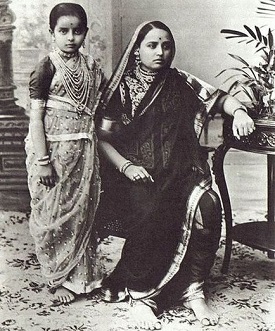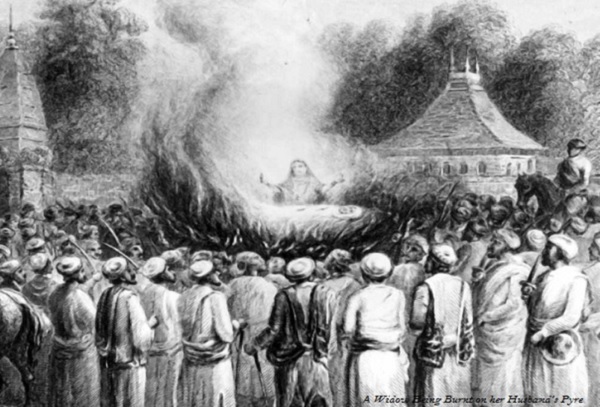
- Modern Indian History Tutorial
- Modern Indian History - Home
- Decline of Mughal Empire
- Bahadur Shah I
- Jahandar Shah
- Farrukh Siyar
- Muhammad Shah
- Nadir Shah’s Outbreak
- Ahmed Shah Abdali
- Causes of Decline of Mughal Empire
- South Indian States in 18th Century
- North Indian States in 18th Century
- Maratha Power
- Economic Conditions in 18th Century
- Social Conditions in 18th Century
- Status of Women
- Arts and Paintings
- Social Life
- The Beginnings of European Trade
- The Portuguese
- The Dutch
- The English
- East India Company (1600-1744)
- Internal Organization of Company
- Anglo-French Struggle in South India
- The British Conquest of India
- Mysore Conquest
- Lord Wellesley (1798-1805)
- Lord Hastings
- Consolidation of British Power
- Lord Dalhousie (1848-1856)
- British Administrative Policy
- British Economic Policies
- Transport and Communication
- Land Revenue Policy
- Administrative Structure
- Judicial Organization
- Social and cultural Policy
- Social and Cultural Awakening
- The Revolt of 1857
- Major Causes of 1857 Revolt
- Diffusion of 1857 Revolt
- Centers of 1857 Revolt
- Outcome of 1857 Revolt
- Criticism of 1857 Revolt
- Administrative Changes After 1858
- Provincial Administration
- Local Bodies
- Change in Army
- Public Service
- Relations with Princely States
- Administrative Policies
- Extreme Backward Social Services
- India & Her Neighbors
- Relation with Nepal
- Relation with Burma
- Relation with Afghanistan
- Relation with Tibet
- Relation with Sikkim
- Relation with Bhutan
- Economic Impact of British Rule
- Nationalist Movement (1858-1905)
- Predecessors of INC
- Indian National Congress
- INC & Reforms
- Religious & Social Reforms
- Religious Reformers
- Women’s Emancipation
- Struggle Against Caste
- Nationalist Movement (1905-1918)
- Partition of Bengal
- Indian National Congress (1905-1914)
- Muslim & Growth Communalism
- Home Rule Leagues
- Struggle for Swaraj
- Gandhi Assumes Leadership
- Jallianwalla Bagh Massacre
- Khilafat & Non-Cooperation
- Second Non-Cooperation Movement
- Civil Disobedience Movement II
- Government of India Act (1935)
- Growth of Socialist Ideas
- National Movement World War II
- Post-War Struggle
- Clement Attlee’s Declaration
- Reference & Disclaimer
Modern Indian History - Status of Women
The family system in the 18th century India was primarily patriarchal, that is, the family was dominated by the senior male member, and inheritance was through the male line.
In Kerala, however, the family was matrilineal. Outside Kerala, women were subjected to nearly complete male control.
Women were expected to live as mothers and wives only, though in these roles they were shown a great deal of respect and honor.

Even during war and anarchy, women were seldom molested and were treated with respect.
A European traveler, Abbe J.A. Dubois, commented, at the beginning of the 19th century −
"A Hindu woman can go anywhere alone, even in the most crowded places, and she need never fear the impertinent looks and jokes of idle loungers....A house inhabited solely by women is a sanctuary which the most shameless libertine would not dream of violating."
The women of the time possessed title individuality of their own. This does not mean that there were no exceptions to this rule. Ahilya Bai administered Indore with great success from 1766 to 1796.
Many Hindu and Muslim ladies played important roles in 18th century politics.
While women of the upper classes were not supposed to work outside their homes, peasant women usually worked in the fields and women of the poorer classes often worked outside their homes to supplement the family income.
The purdah was common mostly among the higher classes in the North. It was not practiced in the South.
Boys and girls were not permitted to mix with each other.
All marriages were arranged by the heads of the families. Men were permitted to have more than one wife, but except for the well-off, they normally had only one.
On the other hand, a woman was expected to marry only once in her life-time.
The custom of early marriage prevailed all over the country.
Sometimes children were married when they were only three or four years of age.
Among the upper classes, the evil customs of incurring heavy expenses on marriages and of giving dowry to the bride prevailed.
The evil of dowry was especially widespread in Bengal and Rajputana culture.
In Maharashtra, it was curbed to some extent by the energetic steps taken by the Peshwas.
Two great social evils of the 18th century India, apart from the caste system, were the custom of sati and the harrowing condition of widows.
Sati involved the rite of a Hindu widow burning herself (self-immolation) along with the body of her dead husband.

Sati practice was mostly prevalent in Rajputana, Bengal, and other parts of northern India. In the South it was uncommon: and the Marathas did not encourage it.
Even in Rajputana and Bengal, it was practiced only by the families of rajas, chiefs, big zamindars, and upper castes.
Widows belonging to the higher classes and higher castes could not remarry, though in some regions and in some castes, for example, among non-Brahmins in Maharashtra, the Jats and people of the hill-regions of the North, widow remarriage was quite common.
There were all sorts of restrictions on her clothing, diet, movements, etc. In general, she was expected to renounce all the pleasures of the earth and to serve selflessly the members of her husband's or her brother's family, depending on where she spent the remaining years of her life.
Raja Sawai Jai Singh of Amber and the Maratha General Prashuram Bhau tried to promote widow remarriage but failed.